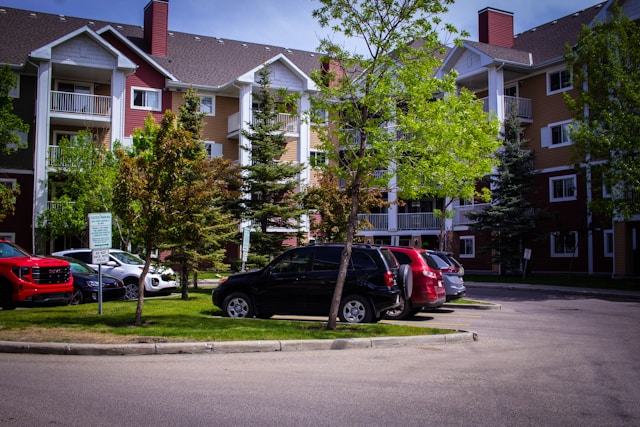In property management, few things matter more than maintaining healthy, predictable cash flow. Whether you own a single rental property or manage a growing investment portfolio, your ability to generate consistent monthly income depends on one critical factor—strategic leasing.
From tenant screening and lease structuring to rent adjustments and market analysis, strategic leasing helps landlords maximize income while minimizing risks, vacancies, and unnecessary expenses.
In this article, we’ll explore how landlords can use data-driven leasing strategies to optimize cash flow—and how partnering with a professional property management company can make all the difference.
Understanding Cash Flow in Rental Properties
Before diving into leasing tactics, it’s important to understand what cash flow actually represents.
Cash flow = Total Rental Income – (Operating Expenses + Debt Obligations)
A positive cash flow means your property generates more money than it costs to operate. But even well-located rentals can experience negative cash flow if leases are mispriced, tenants default, or maintenance is poorly planned.
You can reduce this risk by taking a strategic leasing approach—one that focuses not only on getting tenants fast but getting the right tenants under the right terms.
For example, see our detailed guide on 3 Things to Check When Reviewing a Tenant Application to understand how screening quality tenants directly supports long-term financial stability.
1. Smart Pricing: Setting the Right Rent
Pricing your rental too high increases vacancy risk; too low, and you’re leaving money on the table. Strategic leasing starts with market benchmarking—analyzing comparable rents in your area, factoring in amenities, property age, and location trends.
- Research local rent averages regularly.
- Adjust seasonally—consider that winter months often bring slower rental activity. Read Navigating the Winter Rental Market: Challenges and Strategies for Landlords to plan your pricing and promotions.
- Offer short-term rent incentives during off-peak seasons (e.g., one month free) to maintain occupancy without long-term discounting.
Strategic pricing can stabilize income year-round and prevent costly turnover gaps.
2. Reducing Vacancy Through Retention-Focused Leasing
Every day your property sits empty costs you money. Retention-focused leasing minimizes turnover by fostering long-term relationships with reliable tenants.
Consider offering:
- Renewal incentives for tenants with clean payment histories.
- Flexible lease extensions (e.g., 13- or 14-month leases) to avoid off-season vacancies.
- Small upgrades or maintenance perks at renewal time.
Check out 8 Ways to Improve Your Tenant Retention for more practical retention ideas that improve occupancy consistency—and cash flow predictability.
3. Tenant Screening as the Foundation of Stable Cash Flow
Leasing is only as good as the tenants you approve. Strategic leasing uses rigorous screening to reduce payment delays, evictions, and damage expenses.
Landlords should:
- Verify income and employment carefully. (How to Properly Conduct an Employment Reference Check)
- Contact previous landlords. (How to Properly Conduct a Landlord Reference Check)
- Assess credit and background reports.
Stronger screening = fewer late payments, lower turnover, and reduced legal risk.
If you’re new to managing this process, see Choosing the Right Property Management Company: A Landlord’s Guide to understand how professional managers streamline tenant qualification.
4. Lease Structuring to Strengthen Predictability
Leases aren’t just contracts—they’re financial control mechanisms. A well-structured lease ensures consistent revenue and legal protection.
Strategic property managers customize leases based on:
- Payment timing (aligning rent collection with tenant pay cycles)
- Maintenance responsibilities (clear division between landlord and tenant obligations)
- Automatic rent escalations to keep up with inflation and market trends
Learn more about Ontario’s requirements in What Is the Ontario Standard Form of Lease?.
A tailored lease not only keeps your rental compliant but also shields your cash flow from unexpected disruptions.
5. Periodic Rent Reviews and Adjustments
Market conditions shift fast—especially in Ontario’s urban centres. Reviewing your rents annually ensures you don’t fall behind market averages.
For example:
- Compare your rental’s pricing against neighbourhood benchmarks every 12 months.
- Use legal increases as outlined in How to Serve a Rent Increase Properly in Ontario.
- If your property qualifies, consider modest improvements that justify rent increases above provincial guidelines. (3 Ways to Increase Rent Past the Provincial Guideline)
Small, consistent rent adjustments—rather than large, infrequent hikes—help maintain stable, predictable income while keeping tenants satisfied.
6. Strategic Lease Timing and Tenant Mix
Timing leases strategically can prevent vacancies and create smoother cash flow.
For example:
- Stagger lease end dates so not all units become vacant at once.
- Align renewals with high-demand months like May–September.
- Target tenant profiles that match the local market—students, professionals, or families.
For properties near universities, see The Student Rental Market: Pros and Cons for Landlords.
For condos, learn about tailored strategies in Should Landlords Hire a Property Manager for Their Condo Unit?.
7. Proactive Property Maintenance Planning
Unexpected maintenance can drain profits. Strategic leasing involves budgeting and scheduling preventive maintenance to protect cash flow from surprises.
Property managers often:
- Conduct annual inspections (What, When, and How Are General Rental Property Inspections Conducted?)
- Prioritize upgrades that add rental value (Want to Charge More Rent? Property Upgrades to Increase Your Rental Revenue)
- Track recurring issues with maintenance software (Online Property Management Softwares Available for Landlords)
Preventive maintenance not only extends asset life but also supports consistent cash flow by minimizing emergency repair costs.
8. Legal Compliance to Prevent Costly Interruptions
Compliance with provincial regulations ensures uninterrupted rent collection and prevents financial penalties.
Common pitfalls include:
- Improper rent increase notices
- Failure to maintain safety standards
- Violations of tenant privacy or inspection rules (When and How Can a Landlord Inspect Their Own Rental Property?)
For more, read Avoiding Legal Pitfalls in Ontario Landlord-Tenant Relations.
Proper lease documentation and compliance protect your investment and keep revenue flowing smoothly.
9. Leveraging Market Insights for Strategic Adjustments
Smart landlords use evaluation reports to compare actual performance against projections.
A professional property manager helps you identify:
- Underperforming units
- Opportunities to increase rents or reduce expenses
- Investment readiness for refinancing or resale
Explore how data-driven reporting works in Using Evaluation Reports to Attract Investors.
Consistent financial review helps keep your portfolio optimized for long-term profitability.
10. Working with a Property Manager for Sustainable Cash Flow
Strategic leasing is both an art and a science. It requires market expertise, legal understanding, and financial discipline. A professional property management team like ManageYourProperty.ca provides:
- Accurate market rent assessments
- Tenant screening and retention programs
- Proactive maintenance scheduling
- Detailed financial tracking and reporting
For landlords managing multiple units, read Managing a Multiplex Property: The Key Differences and Considerations to see how management strategy impacts multi-unit profitability.
With expert guidance, your leases become more than just contracts—they become financial instruments that sustain consistent returns.
Conclusion: Turn Leasing Decisions into Profit Strategies
Optimizing cash flow isn’t about collecting rent—it’s about designing leases that work for your business goals. From choosing the right tenants and structuring smart leases to maintaining compliance and long-term retention, every step in the leasing process affects your bottom line.
When handled strategically, leasing transforms your rental property into a steady, scalable source of income—one that performs through market shifts and economic cycles.
If you’re ready to maximize your property’s earning potential, contact ManageYourProperty.ca today. Our leasing experts help landlords across Ontario make every lease decision count toward stronger, more predictable cash flow.





